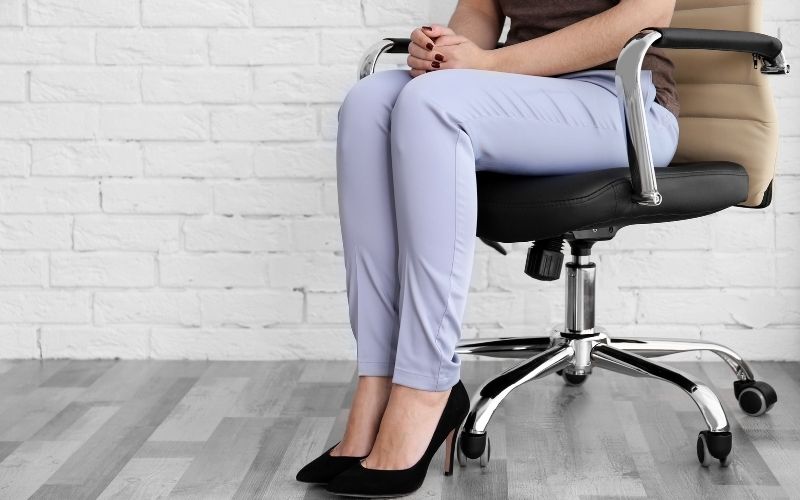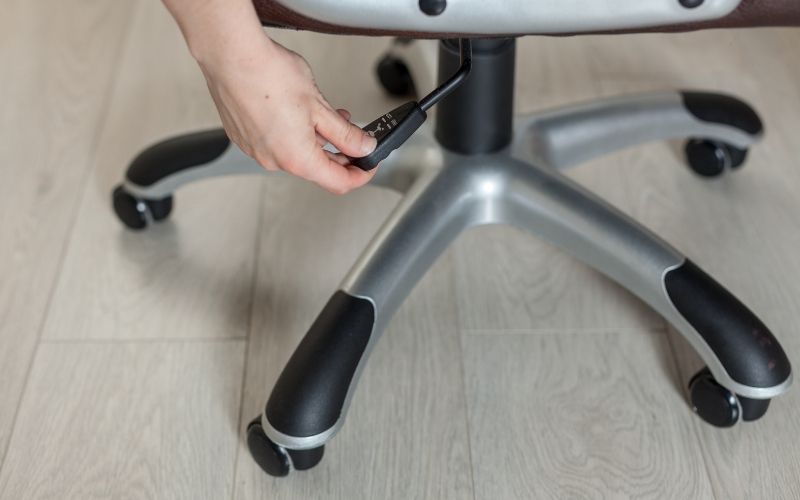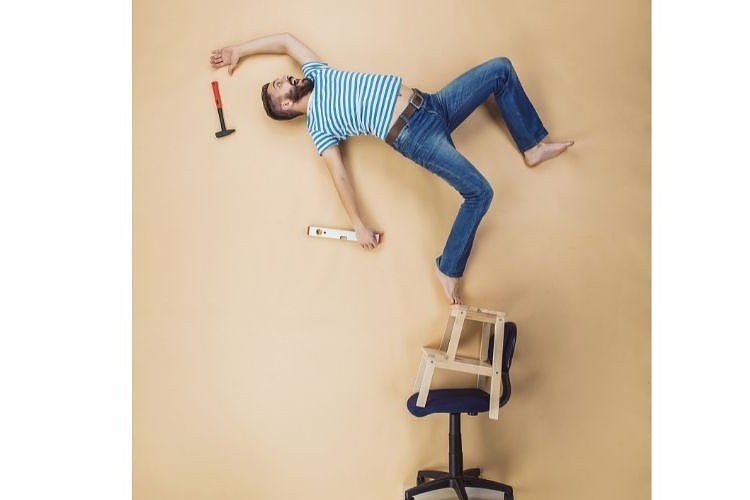We spend about a third of our life at work (or working). If your job requires you to spend most of the day at your desk, it means you’ll spend approximately the same amount of time sitting down.
Don’t you think that warrants having a chair that doesn’t just offer comfort but even benefits your overall health?
We do.
These days, working doesn’t even mean you’re at the office. Most of us have shifted to working from home, so investing in a quality chair is a worthwhile investment.

Using a chair that doesn’t fit you (or the purpose for which you’re using it) has consequences. Fortunately, there’s no lack of available information to ensure that you have the right one.
But when we talk about the “right chair,” there are several things to consider — material, backrests, headrests, seat width, depth, and tilt. What we’ll explore in detail is one crucial aspect: chair height.
So, if you want to know more, read on — this may help you find the chair that suits you best.
Table of Contents
Why Should I Have the Correct Chair?
Because we spend so much time sitting down, the chair we’re using becomes a significant part of our lives — and we’re not just referring to the level of comfort you experience.
An ergonomic chair gives optimal support to our bodies. Its manufacturers considered health-related aspects, such as support and posture.

There is a reason why most people go out of their way to ensure that their chairs are ergonomically sound.
Why? Because using the wrong chair can cause severe health concerns.
It affects your mental health.
If you’re having difficulty maintaining your concentration, the quality of your chair may have something to do with it. Using the wrong chair often leads to distractions because of the amount of discomfort you experience.
You spend more time moving around, trying to find a position that feels right. Unfortunately, no matter how many times you adjust or readjust your posture, you still can’t relax.

It also causes your spine to be misaligned. It, in turn, results in your muscles compensating to keep you upright. You may think it doesn’t have an impact, but prolonged periods tend to make you feel fatigued, and your brain becomes foggy.
Having the right chair reduces fatigue and makes you more productive.
It may lead you to experience chronic pain.
A commonly experienced effect of using the wrong chair is developing bad posture. If your chair’s height is inappropriate for your desk’s height, it may cause neck and shoulder pain.
After a while, you’ll start experiencing it in different parts of your body — your lower back and hips. In worst-case scenarios, the discs in your spine may compress and lead to chronic pain.

It affects the body’s blood flow.
It may seem like a stretch, but using the wrong chair prevents the blood from properly circulating throughout your system. Your chair’s height has a direct connection to this.
You may ask which is better — sitting on a chair that’s too high or one that’s too low?
The short answer is neither. Either scenario has its own set of consequences.
If your chair is too high:
- Your body becomes destabilized, leading to fatigue.
- It puts a lot of pressure on your thighs, preventing the backflow of blood. It may cause swelling in the legs, ankles, and varicose veins.
- It puts pressure on the sciatic nerve. It eventually results in pain or discomfort.
- You can’t use your chair’s lumbar support properly.
If your chair is too low:

- You may experience swelling since It affects blood circulation in your lower legs.
- It puts pressure on your organs.
- You’ll feel discomfort since there’s too much stress on your buttocks.
So… What Is the Correct Height for an Office Chair?
Since we’ve put so much emphasis on making sure you’re using the right chair, the question is — What should you be looking for in an office chair?
There are several aspects to consider, from the kind of support it provides to what adjustments it’s capable of making. What we’re going to focus on is an office chair’s height.
An office chair’s height considers the distance from the floor to the seat. It varies from chair to chair, but these typically range between 16 to 22 inches (41 to 56 cm).
Unlike desks, which have a standard height of around 29 inches, no one rule states how high an office chair should be.
How Do I Calculate the Ideal Height for My Office Chair?
The ideal chair reduces the unfavorable effects on your body as your work. Although there is no standard height for office chairs, there is an optimal measurement.
The secret, however, is that it’s different for all of us.
Why? Because it depends on your build.
If you want to figure out how to get your chair to the ideal height for you, there are two body parts you need to use to calculate it.
Consider Your Feet.

Your office chair is at its ideal height when you can place both your feet flat on the floor. Your knees should also be at 90-degree angles.
If you’re already sitting on it, use the pneumatic levels at the side to raise or lower the seat as necessary.
You can also stand next to a chair and measure its height with your knees. Ideally, it should be when the cushion or the top of the seat is just below your kneecap.
This process allows you to determine whether the distance between the floor and the seat is ideal for you, even if its height isn’t adjustable.
Consider Your Forearms.

If you work using a computer most of the time, having your forearms at the right height prevents neck and shoulder pain. The best way to do this is to adjust your seat until your forearms are slightly above your desk.
Make sure your elbows form a 90 to 100-degree open-angle, and your forearms are parallel with the surface of your table. It allows your wrists to maintain a neutral position, preventing conditions such as carpal tunnel in the long term.
What If They Don’t Match?
Finding a chair that fits the criteria based on your feet and forearms is easier said than done.
Sometimes, you’ve already found the right height, and you can plant your feet on the ground. However, to meet the appropriate distance for your forearms, you must raise the seat higher. If you find yourself in this situation, try using footrests to compensate for the change in height.
In Conclusion

Finding the right height for your office chair may not be as easy, but it’s not impossible. Just keep the ways to calculate it in mind, and you’ll be able to adjust it to suit you perfectly.
Remember, taking the time to ensure your chair is at the right height can help avoid adverse long-term health effects.
Check out the chair you’ve been using now to know what to watch out for. In case you need to make some adjustments, you know what to do!

My name is Vance, and I am the owner of To Ergonomics. Our mission is to improve your workflow by helping you create a supportive and welcoming environment. We hope that you’ll find what you’re looking for while you’re here.

